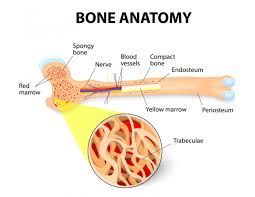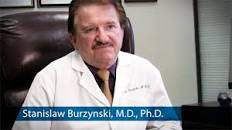Leave a Comment:
12 comments
Hi David-
Are you still there? I was diagnosed with Light Chain MM (90%) in Dec 2020.- as of 5/2022 am 6 month post-SCT. Did not achieve full remission but very good partial remission. (2-3% residual). Last week an MRI showed multiple bone lesions in both mandibles, skull, upper spine and sternum, all that.MRI covered. Scheduled for full body PetScan and another BM biopsy this coming week for a complete re-staging. Can you point me in the direction for some suggestions, please?
Hi Roberta-
Yes, I am still here. Studies indicate that VGPR and CR can achieve the same overall survival. As for your current bone involvement, my guess is that your oncologist will want to prescribe more chemo- have you undergone darzelex/daratumumab? I would also consider integrative therapies. Those supplements such as curcumin, resveratrol, thymoquinone shown to enhance the efficacy of specific chemo regimens.
Let me know if you have any questions.
Hang in there,
David Emerson
ReplyTwenty years in remission post mini auto/allo transplant at Fred Hutchinson Cancer Research Center. Sixteen compression fractures in spine, lytic lesions on R. femur, left upper arm, and skull plus multiple past rib fractures (At least once a year a rib will fracture). Damage to stomach precluded a good diet/supplements. PROBLEM: Kyphotic back, break after break with hardly any time to recover. Never been enough bone left to plate or screw, so no repairs. Now I have been “fired” from a practice for asking for pain meds, even though there is absolutely NO HISTORY or issue with tolerance or addiction. Very, very difficult to get prescribed, but how can I move or exercise even a little with so much damage. Perhaps that many fractures isn’t a big deal and I’m just being a weinnie?
ReplyHi Karen- Let me first congratulate you on such a long remission. As for your back pain, opioids, etc two things. First, I am sure you fractures are a big deal and I am sure you are not being a weinie.
Beyond that, I cannot offer helpful info. Your situation is over my head. I do think exercise would help but I cannot offer help as your situation is complex. Perhaps physical therapy, massage, acupuncture would help?
Sorry I can’t offer more info.
Hang in there,
David Emerson
Good morning. I have MM and would like to learn more about the non-conventional therapies.
ReplyHi Julianne-
I just sent you your welcome email with questions about your MM, goals, etc.
Let me know, thanks.
David Emerson
ReplyI have 13 compression fractures and one top plate fracture (L5) plus six bulging discs. I’ve had one hip replaced due to avascular neucrosis. I can’t find ANY professional to help with this issue. They focus on my pain meds and NOT the problem. Is there any type of specialist that works with my type of case? And, can a chiropracter help? I was once told to stay away from chiropracters…was that piece of information right?
The opiod “crisis” is causing my doctors to decrease meds that I really need to move. Help!
Hi Karen-
I am sorry to read of all of your bone involvement. I’ll try to address each question.
As for a specialist- this is going to be similar to MM- oncology, hematology/oncology, MM specialist. Meaning an orthopedist, then an orthopedist who specializes in AVN. I have not researched this area and therefore can’t recommend anyone.
As for a chiropractor, I admit that you must be careful because you’ve sustained so much bone damage to your spine. I presented originally with damage to my C5 and have been helped by a chiropractor but I had only one break.
I have also read that doctors are reluctant to prescribe opioids. Though I’ve read many positives about CBD elevating bone pain.
I wish I could offer you more info Karen.
David Emerson
ReplyThank you for your comments, David. I found them after I commented for the second time….same problem. In regards to CBD, I grow my own organic marijuana and use a popular recipe for making CBD caps. I have been able to discontinue my sleeping medication, a rarely used muscle relaxer, and at least one less Hydrocodone per day. It is also relaxing. I read reports that a good quality CBD requires a tiny amount of THC in order to work its best, so don’t cook all the THC out of your coconut oil/marijuana mix. It’s your medicine, so make it to the strength you prefer. CBD was recommended to my son by the Canadian Multiple Sclerosis Society. They also supplied the recipe. He let me try his capsules and we both celebrated a serious reduction in pain meds AND an improvement in quality of life.
ReplyI would love more info on how to join this group – or have a consultation. I keep seeing sites, but most of the comments are 3 years old. Was nice to see this one was a few months. I just don’t know where to begin with this. Thank you!!!
ReplyI have had a fracture of my right humerus and the latest PET suggests the left one is in the same condition..I sure would like to avoid that..I would appreciate any help with regard to bone health..thanks..J.
Reply




